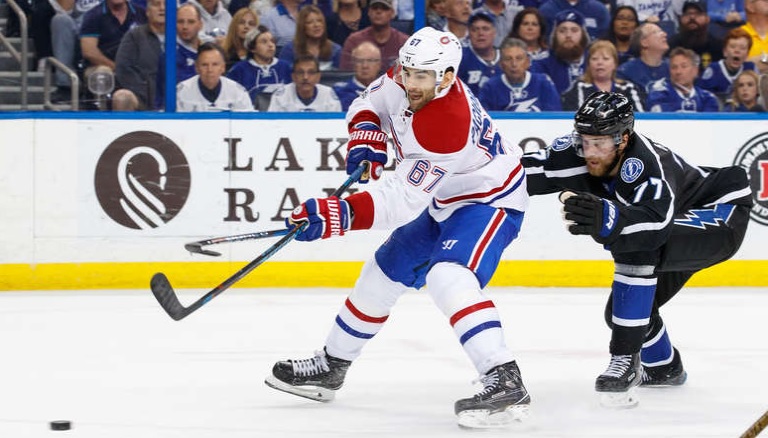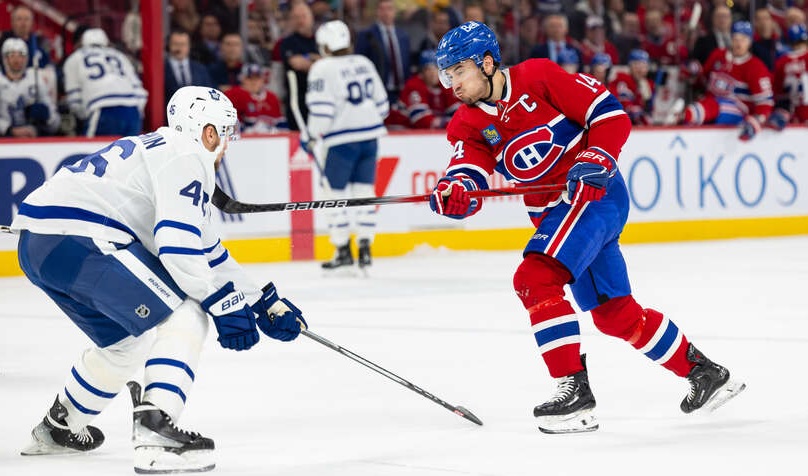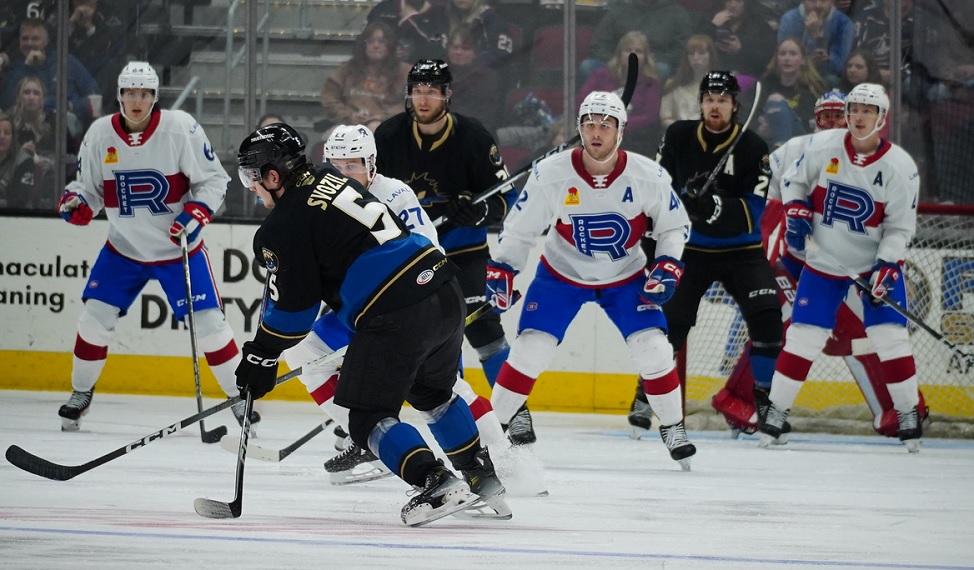HabsWorld.net --
A 2-6-1 start will have any fanbase on edge, more so if the expectation was success before the start of the season. Add in the history and the population of the Canadiens’ fanbase, the dramatic October is easily explained. Make no mistake, I am in no way, shape, or form excusing the play of the Canadiens. They simply haven’t been hungry enough to win games. One can point to shot attempts, but they still rank dead last in terms of shot quality, which points to the same problem at both ends of the ice, they aren’t playing tough enough in the most important zones on the ice.
What a fanbase like this can do to a team in such a brief period is also destroy confidence. Consider that Alex Galchenyuk was no longer a viable option on the top line after some preseason games. Brandon Davidson was not an NHL player before the season started, and Max Pacioretty is the worst captain in Canadiens history after nine games. Yes, October just wouldn’t be October without a substantial portion of the fans wanting to exile Max Pacioretty. At least, Pacioretty has been through it before, and everyone should have the intelligence to understand that he will bounce back, and will still likely reach his 30-35 goal plateau. This fanbase gets this, no? Understanding history, value, and NHL level scorers will point to all fans of the Habs wanting GM Marc Bergevin to take a deep breath and not trade away Max Pacioretty.
In the NHL, most scorers work in streaks. Looking no further than 2016-2017, let’s examine some of the best scorers in the league to make the point. Only seven players scored more goals than Pacioretty last season, even though Pacioretty only scored two goals in the opening nine games of the season, just like he has this year. But he’s not the only player of this goal-scoring community who had bad patches over the course of the season. Last year’s Rocket Richard winner was Sidney Crosby who scored all of two goals over his 13 games in January. Nikita Kucherov scored one goal in eight games to start last season, only two in eight games in December too. Auston Matthews scored four goals in a 14 game November. Brad Marchand scored three goals in 16 games in December. Vladimir Tarasenko scored four goals in his first 11 games last year while Jeff Skinner scored twice in 12 contests in February. Even Patrik Laine, who was likely the most consistent of the bunch had three goals in a 13-game stretch in March last season.
Why these comparables? Simply to illustrate the point that scorers score in bunches, even the best ones! Max Pacioretty is the norm of today’s NHL, and he’s an elite sniper at even amongst those norms. Even Crosby, who is a far better and more complete player than Captain Max, still scores in bunches; he just continues producing when he isn’t scoring. All this to say trading Pacioretty at his lowest point of the season means that another team would essentially be gifted 30-35 goals over the next 72 games because of the bipolarity of a section of Montreal’s fanbase.
Another reason 30 other GMs would be quickly calling Bergevin if the GM were ever to shop Pacioretty is the value of his contract. In the salary cap era, a player that is not on an ELC who scores like Pacioretty commands anywhere from $7-10 million dollars annually, while Pacioretty makes $4.5 million. This is an argument made often to defend this player, and it should continue to be a valid argument until next year’s trade deadline. Players around the league making this salary include Ryane Clowe (who now is an assistant coach for the Devils), Marc Methot, and Marian Gaborik in the overpaid category, Alex Galchenyuk and Gustav Nyqvist (talented but highly inconsistent forwards), leaving Max Pacioretty, Nikita Kucherov, and Alexander Wennberg as underpaid players in this price range. WAIT! In this long list provided, every player is making between $4.7-4.9M too, so actually more than Max. Between this list and Pacioretty’s actual salary, one will find such names as Kyle Palmieri, Chris Kreider, Tyler Toffoli, and Artem Anisimov. A dozen players at the same level of salary, and only Kucherov can really be comparable. Like Pacioretty, Kucherov’s deal also ends at the end of 2018-2019.
This means that for the next year and a half, Pacioretty’s contract really stands as one of the best two contracts in terms of value, in the entire NHL. So unless Tampa Bay calls and offers Nikita Kucherov, there isn’t much point in trading Pacioretty. Why in the world would any team trade away a contract like that? It just doesn’t make any sense whatsoever. Regardless of what the fans think of Pacioretty’s overall play, trading him away before next season’s trade deadline is taking the best possible cap situation possible and ensuring it won’t last very long. And when Montreal starts to feel cap constraints, will this be Bergevin’s fault too?
Finally, the history of Max Pacioretty tells us to breathe and allow him to get going. When Pacioretty was first trying to break into the league in 2010, he was in a competition with Andrei Kostitsyn to play on the second line. He lost that competition and was returned to the AHL. Being interviewed about his demotion, Pacioretty famously said that he’d rather develop as a top-line winger in the AHL than waste his time playing 10 minutes per game on the lower lines in Montreal. He put his money where his mouth was, scored 32 points in 27 games with the Hamilton Bulldogs before being recalled, finishing the season strong scoring 14 goals and 24 points in just 34 games. Big things have been expected from Max since then, but October seems to be the month that always deprives Pacioretty of the 40-goal mark. If only Pacioretty could find his inner Brian Savage and score in October!
As pointed out, this has seemingly been Pacioretty’s fight for his entire career. Looking back at the last five seasons, Pacioretty has scored 16 goals in 45 games played in October. This means Pacioretty is scoring at 0.35 goals per game in October, his exact average for his career. Why then freak out about his poor starts? Quite simply because if one were to remove his white-hot start to the 2015-2016 campaign, these numbers drop considerably to nine goals in 33 games played for 0.25 goals per game. This season stands at 0.22 goals per game, but he’d only require one goal on Thursday night to bring that back near par with his usual October numbers.
What does this all mean? Either Pacioretty’s entering his declining years at the age of 28 (which seems incredibly unlikely), or he’s about to do what scorer do and go on a tear. When this scoring streak happens, Pacioretty detractors will clamour that he always waits until they complain and threaten to trade him before he wakes up. Considering the noise in the city last year of this very same nature, it’s not an entirely wrong argument, if one chooses to ignore the last six years of his career I mean. It appears Pacioretty is a slow starter, and that Habs fans will have to live with that reality even if they don’t like it. Frankly, considering his history, his age, his value, and the nature of scoring in today’s NHL, Pacioretty can start slow next year too if he wants, so long as I see a goal total near the top of the league when all is said and done. Trading him surely appears to be a case of the grass being greener on the other side.


